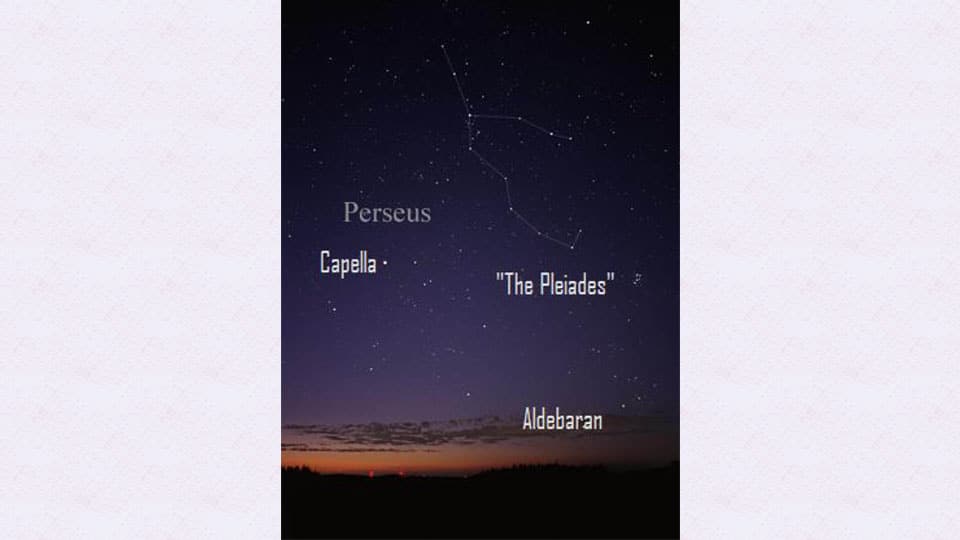By Dr. S.A. Mohan Krishna, Amateur Astronomer and Convener, Mysore Astronomical Society
Indians are privileged to witness astounding Perseid Meteor Showers in the month of August. It is an exceptional celestial spectacle for sky observers that the extravagant yearly ‘Perseid’ showers will illuminate the night sky on Aug. 11 and 12.
“Perseids” is a meteor shower that reaches its peak about August 12 every year, but its meteors can be seen for about three weeks around this date. At least a dozen historic chronicles are known of this shower between 36 AD and 1451 AD. The shower was known as the “tears of St. Lawrence”, after the Saint whose festival is near the time of maximum.
In 1866, the Italian astronomer Giovanni Virginio Schiaparelli (1835-1910) demonstrated that the ‘Perseids’ had the same orbit as the comet 1862 III.
The location of Perseids can be anywhere in the night sky which will be absolutely resplendent. Wobbly meteors will emerge, as biting, diminutive smudges while the brighter Perseids will hover across the sky for numerous seconds parting a succinct trajectory of shimmering smoke. The Perseids are probably the most-watched annual meteor shower. The shower has a very long duration, from about July 17 through August 25. The shower is most interesting around its peak on August 12 or 13.
The second quarter moon will block out some of the fainter meteors this year, but the Perseids are so bright and numerous that it should still be a good show. Best viewing will be from a dark location after midnight. Meteors will radiate from the constellation Perseus, but can appear anywhere in the sky.
The Perseid meteor shower is an annual meteor shower that is extremely regular in its timing and can potentially be visible for weeks in the late summer sky, depending on weather and location. The Perseid meteor shower is named after the constellation Perseus, which is located in roughly the same point of the night sky where the Perseid meteor shower appears to originate from.
This is a useful naming convention, but not very accurate! The source of the Perseid meteor shower is actually debris from the comet Swift-Tuttle. Every year, the earth passes through the debris cloud left by the comet when the earth’s atmosphere is bombarded by what is popularly known as “falling stars.”
In 2019, visibility was somewhat limited by a crescent moon on August 13 which likely wiped out fainter meteors from view. Because of the way the earth hits this debris cloud, the Perseid meteor shower is much more visible in the Northern hemisphere.
For Northern Hemisphere observers, August is usually regarded as “meteor month” with one of the best displays of the year reaching its peak near mid-month. That display is, of course, the annual Perseid Meteor Shower beloved by everyone from meteor enthusiasts to summer campers. But sky-watchers beware: we will be facing a major obstacle in the attempt to observe this year’s Perseid performance, namely, the Moon. The Moon will be hovering below and to the left of the Great Square of Pegasus that night and not all that far from the constellation ‘Perseus’, from where the meteors will appear to emanate (hence the name “Perseid”). But amateur astronomers or serious sky-gazers need not mind about Full Moon, as the peak of Perseid meteor shower is Aug. 12.
On the peak morning in 2020, the Moon will be at or slightly past its last quarter phase, so Moonlight will somewhat mar this year’s production. The meteoric sparkles will obviously last a fortnight; the finest screening is possible during pre-dawn hours. Rates for most observers will probably top out at around 40-50 Perseids per hour, with a few sporadic and minor shower meteors added to the mix. Enjoy watching Perseid Meteor Shower.








Recent Comments